Most Likely Due To A Circular Import
Introduction
In the world of programming, circular imports can often be a cause of confusion and frustration. They can lead to errors and unexpected behavior in code, making it essential for developers to understand their causes, impact, and strategies to avoid them. This article aims to provide comprehensive insights into most likely due to a circular import in English, discussing its nature, consequences, preventive measures, tools for detection, handling in specific programming languages, and common mistakes.
What is a Circular Import?
A circular import occurs when two or more modules depend on each other, forming a loop. This means that module A imports module B, which in turn imports module C, and ultimately, module C imports module A. This circular dependency can result in a conflict, as the program becomes unable to determine the correct order of execution, resulting in an error.
How Does a Circular Import Occur?
Circular imports can occur due to different scenarios. One common scenario is when two modules need to access each other’s functions or variables. If both modules attempt to import each other at the same time, a circular import is created.
Another scenario is when a module imports another module that indirectly imports the first module. This can occur when multiple modules depend on a common module, leading to an unintended circular import.
Understanding the Impact of Circular Imports on Code
Circular imports can have significant impacts on code, leading to errors and unexpected behavior. As mentioned earlier, circular imports create a conflict in determining the execution order of the modules involved. This conflict can result in various errors, such as “ImportError,” “NameError,” or “AttributeError,” making it challenging to diagnose and fix the problem.
Additionally, circular imports can lead to excessive memory usage and slower code execution. As the program repeatedly imports the same modules, it can cause redundant operations and unnecessary memory allocations, negatively impacting the performance of the application.
Strategies for Avoiding Circular Imports
To avoid circular imports, developers can employ several strategies:
1. Reorganize Code and Dependencies: The first step is to analyze the dependencies between modules and identify any circular imports. By reorganizing the code structure and refactoring the dependencies, it is possible to break the circular dependency and establish a more linear flow of code execution.
2. Use Abstract Interfaces: By using abstract interfaces or base classes, developers can define common functionality that several modules require. This allows modules to depend on the interface rather than a specific implementation, reducing the likelihood of circular imports.
3. Dependency Injection: Implementing dependency injection can help avoid circular imports by providing modules with their dependencies from external sources. This allows modules to be decoupled from each other, reducing the chances of circular dependencies.
4. Delay Imports: Delaying imports until they are actually needed can help prevent circular imports. By importing modules within functions or methods instead of at the top of the file, the order of dependencies can be more easily controlled.
The Role of Module Design in Preventing Circular Imports
Proper module design plays a crucial role in preventing circular imports. Following the principles of modular programming, modules should have a clear and single responsibility so that their dependencies are minimized. By adhering to the SOLID design principles, specifically the Single Responsibility Principle (SRP) and the Dependency Inversion Principle (DIP), developers can create more scalable and maintainable codebases that are less prone to circular imports.
Tools and Techniques for Detecting Circular Imports
Detecting circular imports manually can be time-consuming and error-prone. Fortunately, there are several tools and techniques available to automate this process:
1. Linting Tools: Popular linting tools like Flake8 and PyLint often include features to detect and warn about circular imports. These tools analyze the codebase and provide feedback on potential issues, including circular imports.
2. Dependency Graph Visualizers: Tools such as SourceTrail and Pydeps can analyze the codebase and generate visual representations of the module dependencies. These graphs can help identify circular imports and provide a better understanding of the code structure.
3. Integrated Development Environments (IDEs): Many IDEs, such as PyCharm, provide built-in features to detect circular imports and offer recommendations for resolving them.
Handling Circular Imports in Specific Programming Languages
Circular imports can occur in various programming languages, but each language may have slightly different approaches to addressing them. Here are a few examples:
1. Python: In Python, circular imports can be handled by importing modules within functions or methods instead of at the top-level. Additionally, developers can use the “import-as” syntax to provide aliases and avoid direct module references.
2. Flask: When encountering circular imports in Flask, a common solution is to move the imports inside the functions or use the `current_app` object to access the required module dynamically.
3. Django: Django provides a solution for circular imports involving serializers by using string references instead of direct module imports. By referring to the serializer classes using strings, circular imports can be avoided.
Common Mistakes and Pitfalls Related to Circular Imports
While circular imports can be challenging to handle, it’s worth exploring some common mistakes and pitfalls to avoid:
1. Partially Initialized Modules: Importing from a partially initialized module can lead to circular import errors. It is essential to ensure that modules are fully initialized before importing from them.
2. Inconsistent Usage of Import Statements: Inconsistent usage of import statements can lead to circular imports, as it becomes difficult to track the dependencies. It is crucial to adopt a consistent pattern of importing modules throughout the codebase.
3. Overuse of Wildcard Imports: Wildcard imports, such as `from module import *`, can make it difficult to identify and resolve circular imports. It’s generally recommended to avoid wildcard imports and be explicit about the required imports.
Conclusion
Most likely due to a circular import in English can be a complex issue to tackle in programming. However, understanding its nature, causes, prevention strategies, tools for detection, handling in specific programming languages, and common mistakes can significantly enhance developers’ ability to identify and resolve circular import errors. By adhering to modular design principles, employing effective strategies, and utilizing the available tools, programmers can minimize the impact of circular imports and create more reliable and efficient codebases.
How To Avoid The Dreaded Circular Import Problem In Python
What Does Most Likely Due To A Circular Import Mean In Python?
In the world of programming, circular imports can sometimes be a challenging issue to tackle in any programming language. However, in Python specifically, encountering a message stating “most likely due to a circular import” might leave you wondering what exactly it means and how to deal with it. In this article, we will dive into the concept of circular imports in Python, explore what causes them, and provide solutions to effectively resolve these errors.
Understanding Circular Imports:
A circular import occurs when two or more modules depend on each other, creating a loop of imports. This means that Module A imports Module B, while Module B also imports Module A. As a result, a sort of infinite loop is created, causing confusion and, ultimately, an error.
What Causes Circular Imports?
The most common cause of circular imports is when the dependencies between modules are not correctly organized. Here are two primary scenarios that can lead to circular imports:
1. Mutual Dependency: This occurs when two or more modules rely on each other for their successful execution. For example, Module A might use a function from Module B, while Module B relies on a class defined in Module A.
2. Package Structure: When a project grows, it often makes sense to organize related modules into packages. However, if the package structure is not conceived properly, circular imports can easily occur. This typically happens when one or more packages import from each other.
How Does Python Handle Circular Imports?
When Python encounters circular imports, it generally raises an ImportError exception with the message “most likely due to a circular import”. This warning is a mechanism to protect and inform developers about the potential issues associated with circular imports. Python detects this loop and avoids further execution to prevent infinite recursion.
Resolving Circular Imports:
Circular imports can be resolved using various techniques and best practices. Here are some effective strategies to consider:
1. Dependency Injection: Instead of importing modules directly, pass the required objects as parameters to the dependent module’s functions or methods. By doing so, you eliminate the need for circular imports, breaking the loop.
2. Local Import: If you only need to import a module within a specific function or method, consider importing it locally rather than at the top level. By placing the import statement inside the function or method, you avoid causing a circular dependency at the module level.
3. Rearrange Imports: Reorganize your imports to minimize circular dependencies. Analyze the dependencies between modules and consider restructuring your codebase accordingly. This may involve moving functions or classes to different modules or packages to break the circular loop.
4. Abstract Layers: Create an abstract layer that acts as an intermediary between the modules experiencing circular dependencies. This layer would abstract away the dependencies and allow the modules to communicate indirectly.
5. Redesign the Architecture: In some cases, circular imports might occur due to fundamental design flaws. In such situations, a complete overhaul of the architecture might be necessary. It may involve rethinking the relationships between modules and designing a new system that avoids circular dependencies altogether.
Frequently Asked Questions (FAQs):
Q: Can circular imports cause run-time errors?
A: Yes, circular imports can lead to run-time errors, specifically when modules are imported with eager initialization. If module A imports module B, which in turn imports module A at the top-level, it can result in undefined variable errors or unexpected behaviors.
Q: How can I identify circular imports in my code?
A: Identifying circular imports can be challenging, especially in larger codebases. However, there are several tools available, such as pylint or flake8, that can help detect circular imports and suggest potential solutions.
Q: Are circular imports specific to Python?
A: Circular imports can occur in other programming languages as well, but Python has built-in mechanisms to handle them and provide clear error messages. Some languages may silently allow circular imports, leading to subtle bugs or runtime errors.
Q: Are circular imports always problematic?
A: Not necessarily. In some cases, circular imports may be intentionally used as a design pattern. However, it is generally advisable to avoid circular imports to prevent issues such as infinite loops or unexpected behaviors. It is crucial to evaluate whether your particular scenario justifies the use of circular imports.
In conclusion, understanding circular imports in Python is essential for creating clean, efficient, and bug-free code. By being aware of the causes, consequences, and various resolution strategies, you can confidently tackle circular import errors and optimize your Python projects. Remember, preventing circular imports will help you maintain well-organized code and improve the overall reliability of your software.
What Is Most Likely A Circular Import?
In the world of programming, circular imports can be a common issue that developers may encounter. A circular import occurs when two or more modules depend on each other, resulting in a never-ending loop that can lead to unexpected behavior and errors in the code.
When a circular import occurs, it means that one module is trying to import another module that itself depends on the first module. This creates a situation where the modules are locked in a never-ending cycle of importing each other.
To better understand circular imports, let’s look at a simple example. Suppose we have two Python modules, module A and module B. Module A needs to import some functionality from module B, and at the same time, module B also needs functionality from module A. This leads to a situation where both modules depend on each other, causing a circular import.
Circular imports can be particularly problematic because they can result in unexpected behavior and difficult-to-debug issues. When modules try to import each other indefinitely, it can cause infinite loops, which can crash the program or consume excessive system resources.
Common Scenarios That Lead to Circular Imports
Circular imports are more likely to occur when working with a large codebase or complex project structure. There are several scenarios that can lead to circular imports:
1. Mutual Dependency: This is the most straightforward scenario, where two modules simply depend on each other. As explained in the earlier example, if module A needs to import from module B, and module B needs to import from module A, a circular import will occur.
2. Nested Imports: Sometimes, circular imports can happen indirectly due to nested imports. For example, if module A imports module B, and module B imports module C, and module C eventually imports module A, a circular import will be created.
3. Importing from an Init File: Python packages typically have an “__init__.py” file that serves as a package initializer. If a module tries to import from the “__init__.py” file of another package, a circular import can occur.
4. Importing from Multiple Files: In large projects, it is not uncommon to have multiple files that depend on each other. If these files have circular imports between them, it can create a circular import situation.
How to Resolve Circular Imports
Resolving circular imports can be a challenging task, but there are several techniques and best practices that can help mitigate the issue:
1. Rearrange Imports: One approach is to rearrange the import statements in a way that breaks the circular dependency. For example, if module A needs functionality from module B, consider moving the import statement of module B to a more suitable place in the code, or refactor the code to remove the dependency altogether.
2. Import at Function Level: Instead of importing at the top of the module, you can try importing within specific functions or methods, where the imports are actually needed. This can help avoid importing unnecessary dependencies and break the circular import cycle.
3. Use Function Arguments: Instead of importing a module directly, you can pass the required functionality as function arguments. This reduces the need for direct imports and can help break circular dependencies.
4. Splitting Modules or Refactor Code: In more complex scenarios, it may be necessary to split the modules into smaller, more manageable units. This can help isolate dependencies and reduce the likelihood of circular imports. Refactoring the code to eliminate circular dependencies can also be an effective solution.
Frequently Asked Questions (FAQs)
Q1. Can circular imports cause runtime errors?
Yes, circular imports can cause runtime errors such as “ImportError: cannot import name” or “ImportError: cannot import module.” These errors occur when the module being imported is not yet defined due to the circular dependency.
Q2. Is circular import a problem specific to Python?
Circular imports can occur in other programming languages as well, but they are more noticeable in Python due to its import system. Python’s import mechanism allows for importing modules at runtime, which can make circular imports more apparent and problematic.
Q3. How can I detect circular imports?
Detecting circular imports can be challenging, especially in large codebases. You can use tools like linter plugins, such as pylint, to detect potential circular imports. Additionally, running the code and inspecting import-related errors and tracebacks can also help identify circular dependencies.
Q4. Are circular imports always bad?
Circular imports are not always bad, but they can increase code complexity and make maintenance more difficult. In some cases, circular dependencies may be inevitable, but it is important to manage them properly and strive for a clean, decoupled code structure.
Q5. Are there any tools to automatically resolve circular imports?
There aren’t any specific tools that can automatically resolve circular imports. Addressing circular dependencies usually requires manual intervention, careful design, and proper organization of the codebase.
In conclusion, circular imports can be a challenging issue to tackle in programming, particularly in large and complex projects. Understanding the causes and potential solutions for circular imports is crucial for maintaining a healthy codebase. By following best practices and employing appropriate techniques, developers can minimize the occurrence of circular imports and ensure the smooth execution of their programs.
Keywords searched by users: most likely due to a circular import Most likely due to a circular import, Most likely due to a circular import flask, Recursive import python, Django circular import serializer, From partially initialized module, ImportError cannot import name dataclass_transform, Cannot import from python, Cannot import name utils’ from ‘PyPDF2
Categories: Top 30 Most Likely Due To A Circular Import
See more here: nhanvietluanvan.com
Most Likely Due To A Circular Import
When it comes to programming, a circular import is a situation where two or more modules depend on each other, creating an infinite loop of imports. This can lead to various issues and errors, causing frustration and confusion for developers. In the context of the English language, the term “circular import” is used to refer to a linguistic phenomenon where a term or phrase in one language is borrowed back into English, resulting in a circular borrowing process. In this article, we will explore the concept of circular import in English, discuss its implications, and provide some frequently asked questions for further clarity.
Circular import in English essentially occurs when a word or phrase is borrowed from one language into English, and then, at a later point, the same term is borrowed back into the original language as a loanword. This creates a cyclic borrowing process, as the term keeps moving back and forth between the two languages. This phenomenon is particularly common between English and French, where numerous words have been borrowed and returned throughout history.
The circular import of words can have several implications. Firstly, it can create confusion and ambiguity within the languages involved. When a word is borrowed from one language into another, it often undergoes some modifications to fit the phonetics and grammar of the receiving language. However, when the same term is borrowed back into the original language, it may retain its original pronunciation and meaning, leading to potential misunderstanding. This can be especially problematic in cases where the borrowed term develops a different meaning or usage in its adopted language.
Furthermore, circular import can influence the cultural identity and linguistic development of communities. By constantly importing and re-importing terms, languages become intertwined, forging new connections and shaping cultural exchange. This borrowing process reflects socio-political relationships, historical ties, and the need to express concepts that may not have a suitable term within the original language. Circular borrowing is an essential aspect of language evolution and can have a profound impact on the development of both languages involved.
Frequently Asked Questions:
Q: When did circular import between English and French begin?
A: The circular borrowing process between English and French dates back centuries, as the two languages have had a long history of cultural and political interaction. French influence on the English language started with the Norman Conquest in the 11th century, while English terms began to be borrowed back into French during the Industrial Revolution.
Q: Can you provide examples of circular imports in English?
A: Certainly! One popular example is the word “restaurant.” This term was borrowed from French into English, and later it was borrowed back into French with a slightly different pronunciation. Another example is “genre,” which comes from French, but is commonly used in English to categorize artistic styles and forms.
Q: What are the challenges of circular import in communication?
A: Circular borrowing can create challenges in communication due to linguistic differences and diverging meanings. A word borrowed from one language may acquire additional senses or nuances in the other language, resulting in potential confusion or misinterpretation.
Q: How does circular import affect language evolution?
A: Circular import plays a significant role in language evolution. It helps languages borrow new concepts, expand vocabulary, and adapt to cultural changes. This process is dynamic and reflects the evolving nature of communication.
Q: Are there any benefits to circular import?
A: Yes, circular import can enrich both languages involved by introducing new terms, expanding vocabulary, and enabling the expression of novel concepts. It enhances cultural exchange and facilitates communication between different language communities.
In conclusion, circular import in English refers to the cyclical process of borrowing words or phrases between English and another language. This linguistic phenomenon can lead to confusion, ambiguity, and the evolution of language. Despite the challenges it poses, circular import contributes to cultural exchange, language development, and the enrichment of both languages involved. Understanding this concept enhances our appreciation for the dynamic nature of language and its interconnections across diverse cultures.
Most Likely Due To A Circular Import Flask
When working with Python and the Flask framework, one common error that developers may encounter is the “most likely due to a circular import” error. This error message is often seen when there is an issue with importing modules that create a circular dependency, causing the program to fail. In this article, we will explore what circular imports are, why they happen in Flask, and how to resolve them.
What is a circular import?
A circular import occurs when two or more modules in a Python program depend on each other, directly or indirectly. This dependency creates a loop that leads to the program being unable to properly resolve the imports and causes execution errors.
Why do circular imports happen in Flask?
Circular imports are more likely to happen in Flask web applications due to the flexible nature of the framework. Flask allows developers to structure their code in various ways, including splitting functionality among multiple modules or blueprints. While this flexibility is beneficial for organizing and maintaining code, it can also increase the chances of circular imports.
Circular imports in Flask can occur in scenarios where two or more modules need to access functions, classes, or objects from each other. For example, if module A imports module B, and module B also needs to import module A, a circular import is created.
How to identify circular imports?
Identifying circular imports can be a challenging task, as the error message provided may not always explicitly mention the circular import. Instead, you may come across an error that says “most likely due to a circular import,” indicating that the cause of the error is likely a circular import issue.
To troubleshoot circular import problems, you can analyze your code and look for any mutual dependencies between modules or any import statements that create a loop. Additionally, reviewing the traceback and studying the error log can provide additional insights into the origin of the circular import.
How to resolve circular imports in Flask?
There are several approaches to resolving circular imports in Flask. The specific solution will depend on the structure and complexity of your application. Below are a few commonly employed methods:
1. Restructuring the code: One way to solve circular imports is by restructuring the codebase. This may involve moving function or class definitions to different modules or reorganizing the code logic to eliminate direct or indirect dependencies.
2. Importing inside functions: Instead of importing dependencies at the top-level scope, you can import them inside functions that require them. By doing so, the imports will only occur when the function is called, allowing you to avoid the circular import issue. However, this approach may not be feasible for larger applications with complex dependencies.
3. Using Flask’s “app context”: Flask allows you to import modules within the context of the application, using the `current_app` and `app_context` objects. By importing inside the application context, you can avoid circular import issues that occur at the top-level scope.
4. Using delayed imports: Delayed imports involve importing modules or objects inside functions or methods. This technique can help to eliminate circular import problems by ensuring that the imports only occur when they are needed. For example, you can try importing modules right before using them, rather than at the top of your file.
FAQs
Q: Are circular imports limited to Flask?
A: No, circular imports can occur in any Python project but are more commonly seen in Flask due to its flexible structure and the nature of web development.
Q: Can I avoid circular imports altogether?
A: When designing your application, it’s best to consider the structure and dependencies carefully to minimize the risk of circular imports. However, in more complex projects, circular imports might be inevitable, and proper handling techniques should be employed.
Q: How frequent are circular import errors?
A: The occurrence of circular import errors depends on the project’s complexity and how modules are structured. In large Flask projects, with multiple modules, circular imports are more likely to occur.
Q: Can circular imports impact the performance of my Flask application?
A: Circular imports may result in slower application startup time due to additional computations required to resolve dependencies. However, in general, the impact on performance is minimal and should not be a significant concern unless there are excessive circular imports.
In conclusion, circular import errors can be a common issue when working with Flask. However, by understanding what circular imports are, why they happen in Flask, and employing appropriate solutions, you can effectively resolve these errors. Remember to carefully analyze your code structure, consider the dependencies, and choose the most suitable method for resolving circular import issues in your Flask application.
Recursive Import Python
Python is a powerful and versatile programming language, widely used for its simplicity and readability. One of the key features that make Python stand out is its ability to import modules and libraries, which allows developers to reuse existing code and save time. However, there are cases where importing modules can become a bit tricky, leading to the need for recursive import. In this article, we will explore the concept of recursive import in Python, understand its significance, and provide a comprehensive view of its usage.
What is Recursive Import in Python?
Recursive import refers to the scenario where a module is imported by another module, which in turn imports the original module. Essentially, it creates a circular dependency where two or more modules depend on each other. This recursive import can create confusion and even lead to runtime errors if not handled appropriately.
Recursive Import: The Mechanics
To understand recursive import in Python, it is essential to comprehend how the import process works. When a module is imported, Python executes that module’s code from top to bottom. While processing the module, if an import statement is encountered, Python stops executing the current module, proceeds to the imported module, and runs the code within that module. This continues until all the imported modules are processed. Once all the dependencies are resolved, Python resumes executing the code of the initial module.
However, in the case of recursive import, things become complicated. When a module that is already in the process of being imported is encountered again as a dependency, Python realizes this circular dependency and throws a runtime error. To handle this situation, Python creates a partially initialized module object and places it in the sys.modules dictionary. This object is then returned instead of triggering a re-import.
Common Scenarios Requiring Recursive Import
Recursive import in Python is typically seen in more complex codebases and can occur due to various reasons. Some common scenarios that may lead to recursive import include:
1. Bi-directional dependencies: When two modules depend on each other, a circular dependency is created, requiring recursive import to resolve the dependencies.
2. Cascading imports: Multiple modules depend on a central module, which, in turn, depends on other modules that also rely on it. This leads to a cascading effect of imports and requires recursive import.
3. Importing submodules: A module imports a submodule which, in turn, imports the parent module. This situation arises when dealing with large codebases and can introduce recursive import challenges.
Handling Recursive Import in Python
While recursive import can be puzzling, there are techniques available to handle it properly. Below are a few strategies commonly used to manage recursive import scenarios:
1. Restructuring the Code: One effective approach is to restructure the codebase in such a way that the circular dependency is avoided. This can involve separating the conflicting code into a new module, creating a separate shared module, or modifying the import dependencies.
2. Deferred Imports: By deferring imports using techniques like function-level imports or conditional imports, modules can be imported only when required. This helps to break the circular dependency chain and resolve the recursive import challenges.
3. Local Imports: In some cases, it may be suitable to perform local imports within functions or methods instead of importing at the module level. This can help contain imports within specific scopes, minimizing the chances of recursive import issues.
FAQs
Q: What is the downside of recursive import in Python?
A: Recursive import can introduce runtime errors, making it difficult to trace and debug issues. It can also greatly impact the performance of the codebase and make it harder to maintain.
Q: How can I prevent recursive import errors in Python?
A: To prevent recursive import errors, try restructuring your code to avoid circular dependencies. You can also use deferred imports or localize imports within functions or methods to minimize the impact of recursive import.
Q: Can recursive import ever be beneficial?
A: While recursive import is generally considered a code smell, it can sometimes be necessary in certain complex scenarios. However, it’s important to be cautious and use it sparingly, as it can make the codebase more difficult to understand and maintain.
Q: Are there any tools available to detect recursive imports?
A: Yes, Python provides several tools and libraries, such as pylint and flake8, that can analyze your code and detect potential recursive import issues. Using these tools can help ensure the codebase remains clean and free of recursive import problems.
Q: What are the best practices to follow when dealing with recursive import in Python?
A: It is recommended to follow modular and well-organized code structures, avoiding circular dependencies whenever possible. Additionally, adopting coding guidelines and utilizing tools that detect and prevent recursive imports can contribute to maintaining a robust and efficient codebase.
In conclusion, recursive import in Python can be a complex and challenging issue to tackle. Understanding the mechanics of how imports work, identifying potential scenarios causing recursive import, and knowing the strategies to handle them are crucial for smooth code execution and maintainable software. By applying the best practices and leveraging appropriate techniques, developers can effectively manage recursive import problems and ensure the stability and reliability of their Python projects.
Images related to the topic most likely due to a circular import
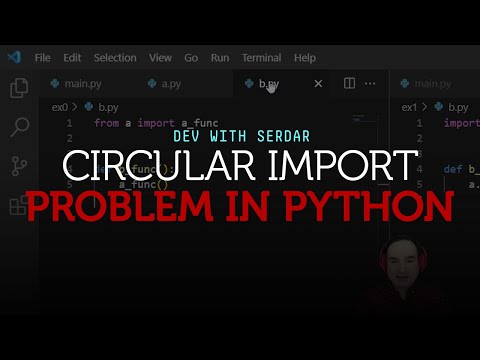
Found 22 images related to most likely due to a circular import theme
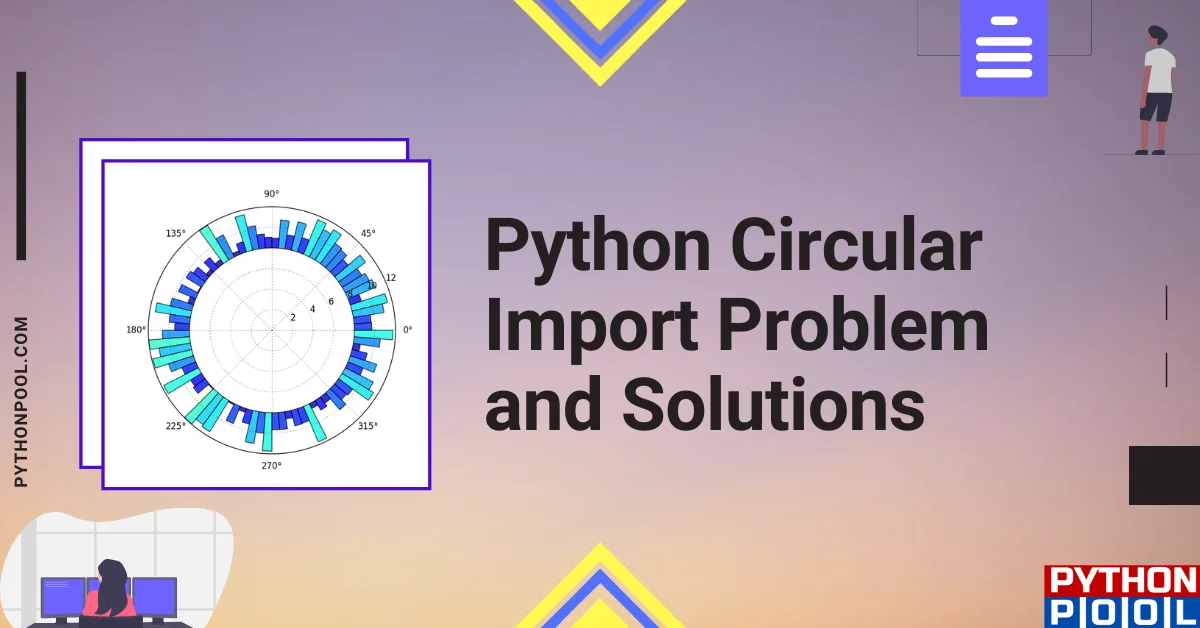

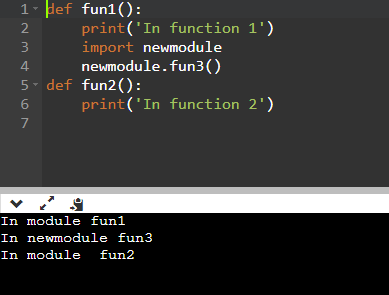












![ImportError: cannot import name X in Python [Solved] | bobbyhadz Importerror: Cannot Import Name X In Python [Solved] | Bobbyhadz](https://bobbyhadz.com/images/blog/python-importerror-cannot-import-name/importerror-cannot-import-name.webp)


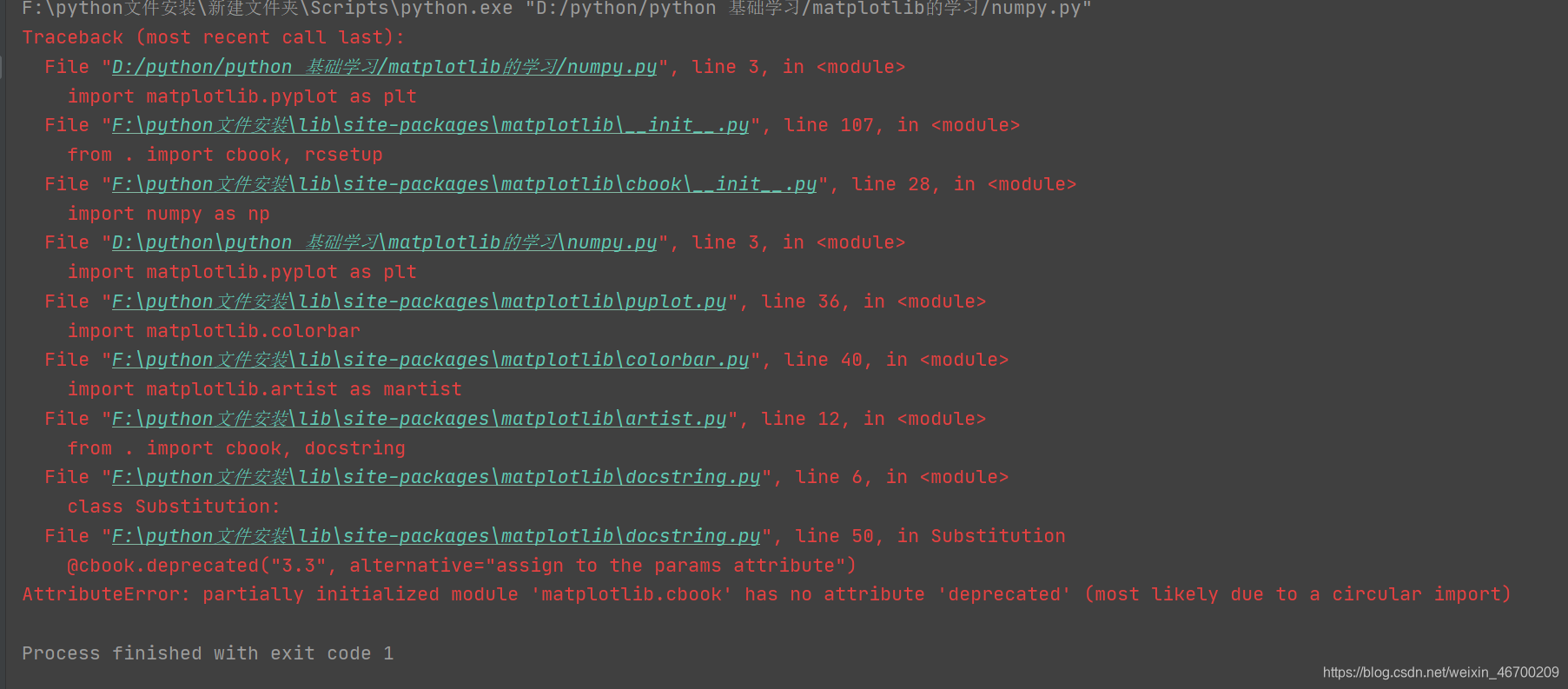
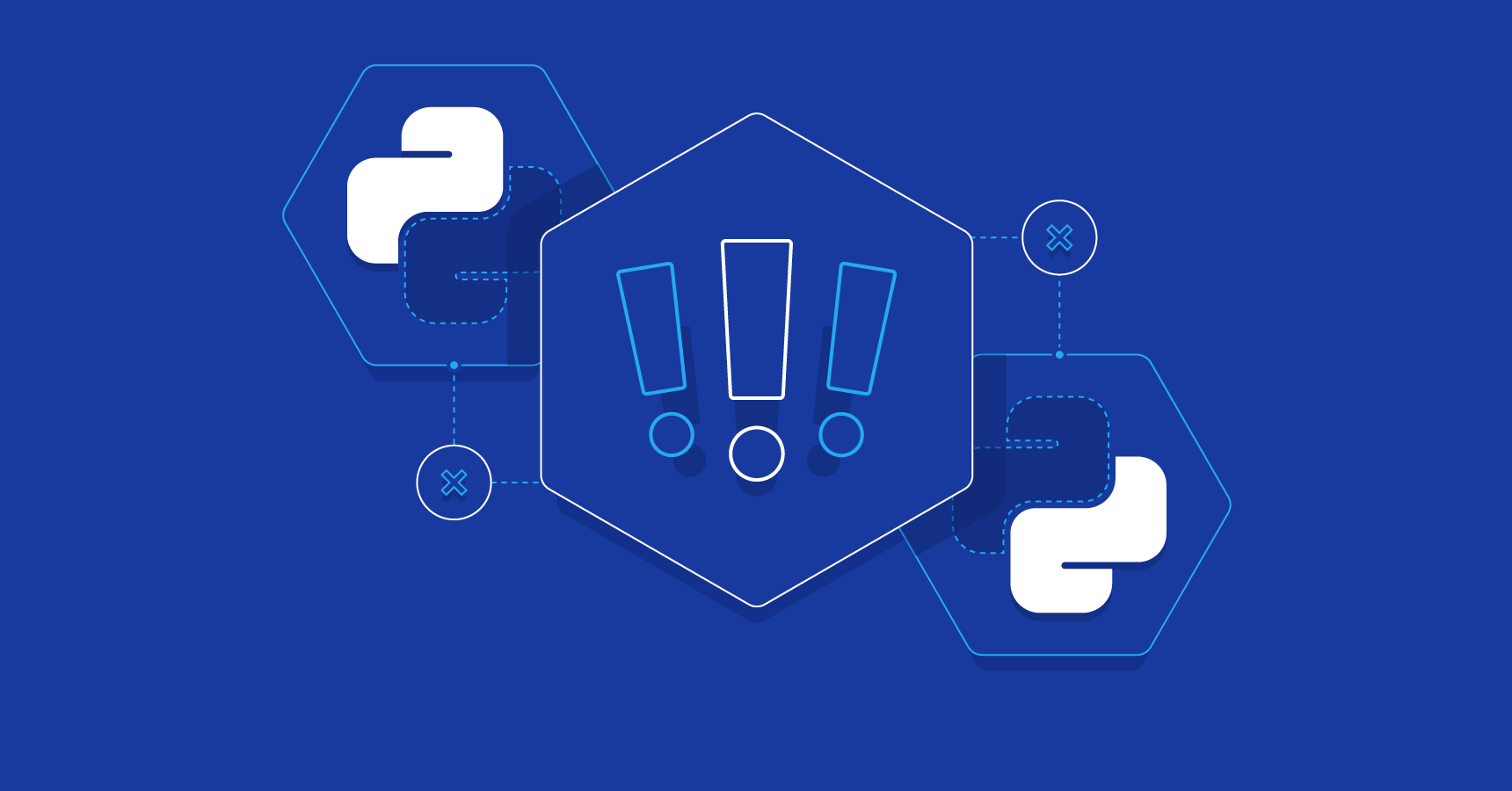

![ImportError: cannot import name X in Python [Solved] | bobbyhadz Importerror: Cannot Import Name X In Python [Solved] | Bobbyhadz](https://bobbyhadz.com/images/blog/python-importerror-cannot-import-name/autocomplete-directly-when-importing.gif)

:max_bytes(150000):strip_icc()/Circular-Flow-c643e6be21e54ff3b0498ee131574860.jpg)
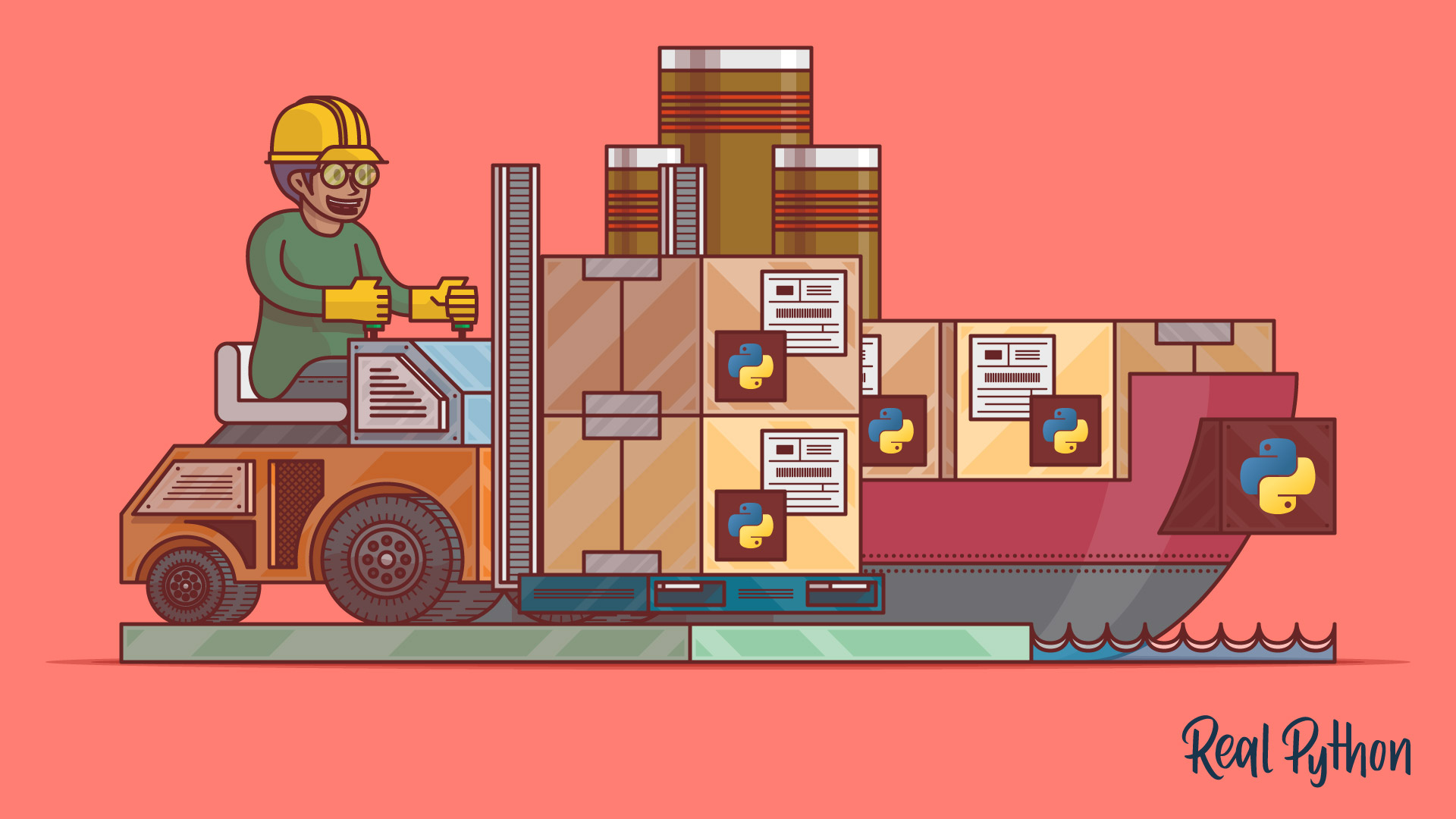
![ImportError: cannot import name X in Python [Solved] | bobbyhadz Importerror: Cannot Import Name X In Python [Solved] | Bobbyhadz](https://bobbyhadz.com/images/blog/python-importerror-cannot-import-name/local-file-shadows-module.webp)



![ImportError: cannot import name X in Python [Solved] | bobbyhadz Importerror: Cannot Import Name X In Python [Solved] | Bobbyhadz](https://bobbyhadz.com/images/blog/python-importerror-cannot-import-name/print-all-attributes-of-module.webp)
Article link: most likely due to a circular import.
Learn more about the topic most likely due to a circular import.
- Python Circular Import Problem and Solutions
- What happens when using mutual or circular (cyclic) imports?
- Python Error: “most likely due to a circular import” (Solution)
- Python Circular Imports Module: Solving Circular Import Problem
- Escaping the Python Import Maze: Tips for Avoiding Circular …
- Python Circular Import Problem and Solutions
- What Happens When you Import a Python Module? | by Xiaoxu Gao
- Circular Relationships in Models – Scaler Topics
- Escaping the Python Import Maze: Tips for Avoiding Circular …
- Avoiding Circular Imports in Python | by André Menck – Medium
- What can I do about “ImportError: Cannot import name X” or …
- How to Fix ImportError: Cannot Import Name in Python – Rollbar
- Fixing Circular Imports in Python with Protocol | pythontest
See more: https://nhanvietluanvan.com/luat-hoc